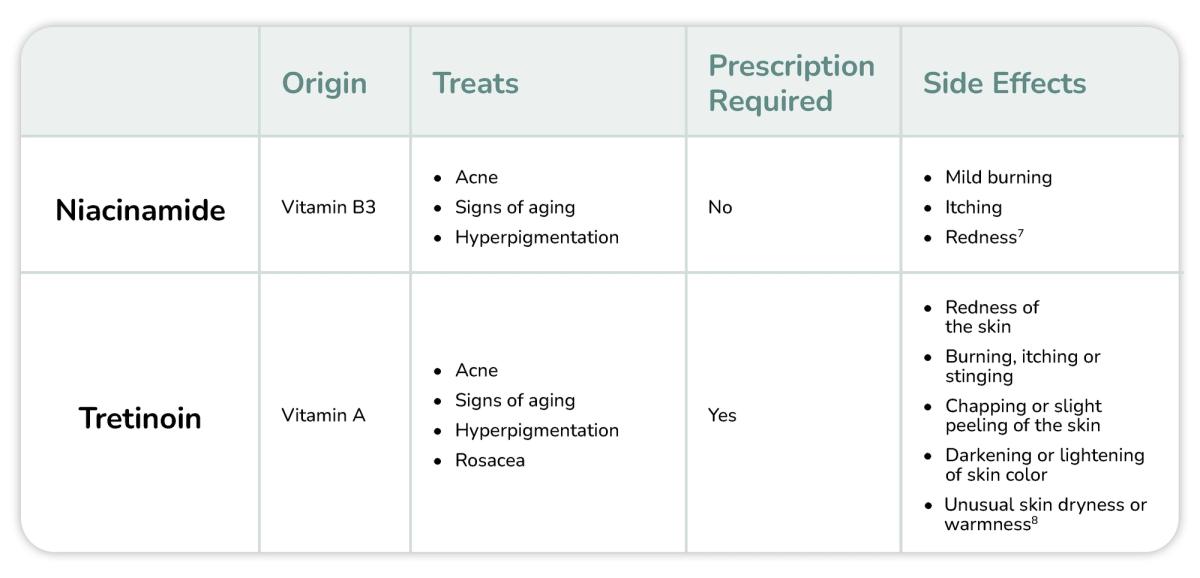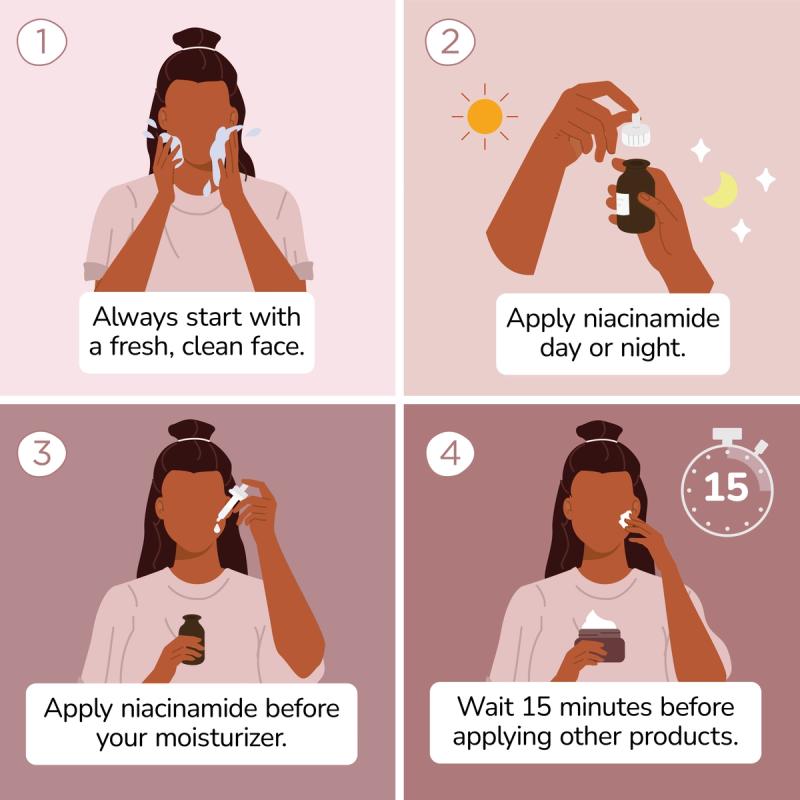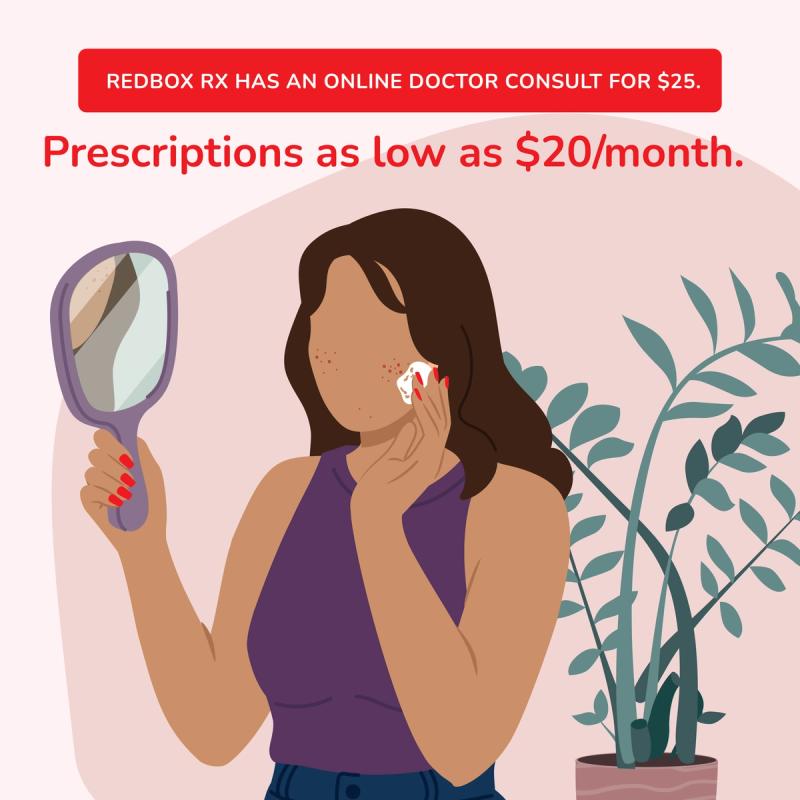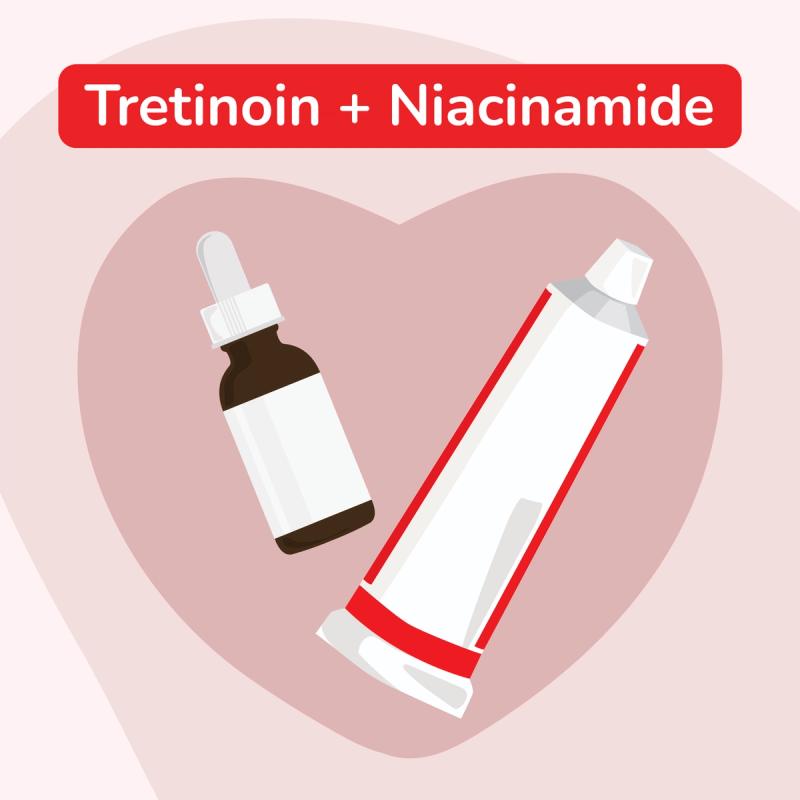Looking to upgrade your skincare routine with proven anti-aging ingredients? Two widely used options — tretinoin and niacinamide — offer powerful benefits for acne, discoloration, fine lines and more. While both are backed by research, they work in different ways and come with different strengths, side effects and accessibility.
In this guide, we compare tretinoin and niacinamide, explore how to use them together safely and offer expert-backed tips for adding them to your routine.
Key Takeaways
Tretinoin is a prescription-strength retinoid with decades of research supporting its effectiveness for acne, aging and hyperpigmentation.
Niacinamide is a milder, over-the-counter option that offers antioxidant and anti-inflammatory benefits, though it has less supporting clinical evidence.
When used together, niacinamide can help strengthen the skin barrier and reduce tretinoin-related irritation. Just be sure to follow your provider’s guidance.
What are the differences between niacinamide and tretinoin?
Niacinamide and tretinoin are both common skincare ingredients. Niacinamide is a type of vitamin B31 and tretinoin is a topical retinoid derived from vitamin A.2
Tretinoin has more than 40 years of credible research supporting its claims to reduce signs of aging, discoloration, rosacea3 and acne. While it has more clinical proof of effectiveness, tretinoin can also be irritating and have unwanted side effects — especially with first-time use. Tretinoin requires a prescription and is not available over the counter.4
Gentler niacinamide is available over the counter and has less reported side effects than tretinoin.5 Some studies suggest that niacinamide may help reduce acne and oil production, and improve signs of aging.6

Can niacinamide and tretinoin be used together?
Yes, niacinamide and tretinoin can be used together. Both topical skincare treatments have research showing improvements in users’ hyperpigmentation, fine lines and acne.
Benefits
Niacinamide helps reduce potential irritation from tretinoin and strengthens the skin barrier,9 while tretinoin promotes cell turnover and collagen production.10
Efficacy
Using niacinamide and tretinoin together could improve your results. One study showed that using a niacinamide-containing moisturizer with tretinoin improved the results and decreased tretinoin-associated side effects.11
Tips & Considerations
Keep these considerations in mind before using niacinamide and tretinoin together:
Results in individuals will vary. Always consult your provider before mixing skincare products or prescriptions.
Apply tretinoin at night. It can increase skin’s sun sensitivity.
Apply niacinamide in the morning. The protective properties can strengthen the skin barrier and make skin less susceptible to environmental damage.
If applied at night together, apply niacinamide first. Niacinamide first can help prepare skin for tretinoin and reduce side effects.12

Clinically proven anti-aging prescriptions for less.
Consult online with a skin specialist for just $25, available 7 days/week. Get anti-aging prescriptions for $20/month.
Get StartedWhat are side effects of niacinamide and tretinoin?
Niacinamide is generally well tolerated with some mild side effects:13
Burning
Itching
Redness
Side effects of tretinoin include:14
Redness of the skin
Burning, itching or stinging
Chapping or slight peeling of the skin
Darkening or lightening of skin color
Unusual skin dryness or warmness
How do you introduce niacinamide or tretinoin into your skincare routine?

Before introducing any new product to your skincare routine, always consult a medical professional.
For best results, follow these tips when starting niacinamide:15
Always start with a fresh, clean face.
You can apply niacinamide day or night depending on your routine.
Apply niacinamide before your moisturizer.
Allow time for niacinamide to absorb into skin before adding other products — approximately 15 minutes.
Tips on adding tretinoin into your skincare routine:16
First, clean face with a mild cleanser.
Allow skin to dry. Applying tretinoin to wet skin can cause irritation.
Apply at night to reduce sun sensitivity and negative interactions with daytime topical products.
Use a pea-size amount to apply a thin layer of product to face.
Avoid washing skin for at least one hour after applying tretinoin.
Apply moisturizer to reduce irritation.
Wear broad spectrum sunscreen of at least 15 SPF daily.
How RedBox Rx can help

RedBox Rx makes it easy and affordable to access prescription treatments for acne, anti-aging, melasma or rosacea, including tretinoin cream or gel.
Benefits of RedBox Rx include:
Transparent, affordable, flat rates for medications starting at $20/month.
$25 consultation with a U.S. licensed medical professional.
No insurance required. HSA and FSA eligible.
No office wait times or scheduling issues that are typical with physical medical practices.
FREE shipping directly to you. One-time, monthly and quarterly subscriptions available.
Get started on your journey toward better skin with our online assessment for acne, anti-aging or rosacea.


